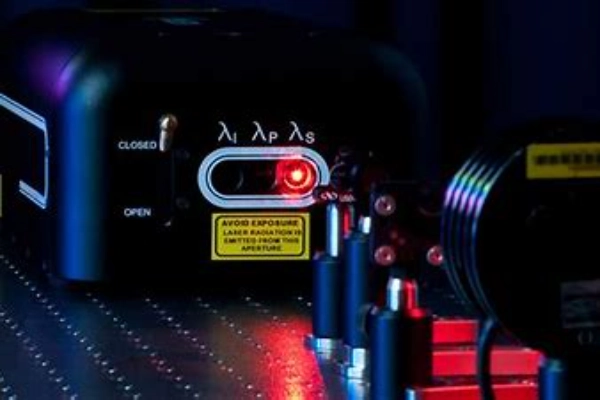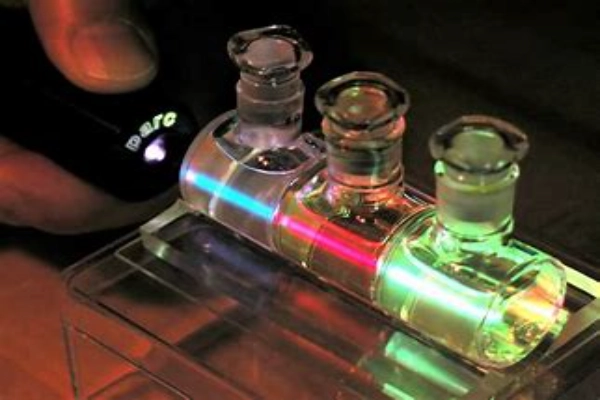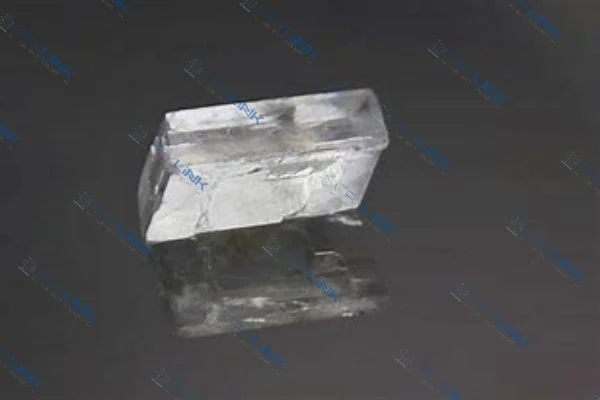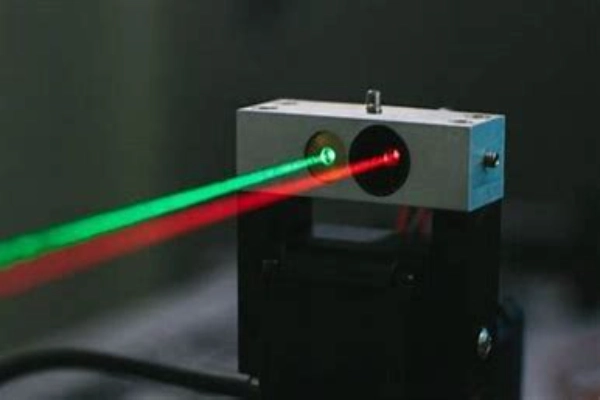Introduction to Tunable Solid-State Lasers
In today’s fast-paced world of photonics, tunable solid-state lasers stand as an epitome of adaptability. These lasers, designed to operate over a vast range of wavelengths, have emerged as indispensable tools across diverse scientific disciplines.

Harmonizing the Spectrum: The Revolution of Tunable Lasers from Deep UV to Far IR
The realm of the electromagnetic spectrum is vast, stretching from the deep ultraviolet (UV) to the far-infrared (IR). Each segment of this spectrum has its unique properties and applications, opening up diverse avenues in both research and practical applications. Within this spectrum, tunable lasers have emerged as powerful tools, offering flexibility and precision like no other.
Delving deeper into the UV region, particularly the deep ultraviolet, we encounter rays that are invisible to the human eye. Their invisibility, however, is not an indication of insignificance. These rays have shorter wavelengths, which means they pack a high amount of energy. This high energy is why deep UV rays are used in applications like disinfection, as they can effectively break down the DNA or RNA of microorganisms.
On the spectrum’s other end, the far-infrared (IR) beams with its longer wavelengths. Unlike the deep UV, far IR doesn’t pack as much energy, but it compensates with its ability to penetrate deeper. This property makes it incredibly valuable in applications like thermal imaging, where it helps visualize heat sources, or in certain therapeutic medical treatments where deep penetration can aid in pain relief.
At the intersection of this vast electromagnetic spectrum and technological advancements stand the tunable lasers. Their ability to span and adjust across different wavelengths offers a level of adaptability that’s unparalleled. Think of tunable lasers as the chameleons of the photonics world. Just as a chameleon changes its color to adapt to its surroundings, tunable lasers can adjust their output to fit specific requirements, be it in research, medicine, or communication.
The evolution of tunable lasers over the years is nothing short of remarkable. The journey began with a singular focus on achieving tunability – the ability to adjust the output wavelength. However, as the years progressed, so did the ambition and vision of scientists and engineers.
They no longer just wanted tunability; they sought efficiency, broad tuning ranges, and top-notch beam quality. And they succeeded. Today’s tunable lasers are a culmination of relentless pursuit and ingenuity. They offer enhanced efficiency, ensuring that minimal energy is wasted. Their tuning ranges have expanded, covering broader portions of the electromagnetic spectrum. Moreover, the beam quality has improved tremendously, providing sharper, more focused outputs.
One might wonder, why such a fervent push for advancements in tunable lasers? The answer lies in the ever-growing demands of various industries and research fields. From medical imaging, where the precision of a laser can make a difference between accurate and inaccurate diagnosis, to communication, where data transfer speeds depend on laser efficiency, the applications are endless. And as these fields grow and evolve, so does the need for better, more advanced tunable lasers.
In essence, the dance between the deep ultraviolet and the far-infrared, orchestrated by tunable lasers, is a testament to human ingenuity. As we continue to harness the power of the electromagnetic spectrum, tunable lasers will undoubtedly play a central role, lighting the way for innovations and breakthroughs.

Versatility in Focus: The Multifaceted Role of Tunable Lasers in Modern Science
Spectroscopy, a powerful tool for understanding molecular and atomic structures, has seen a renaissance with the advent of tunable solid-state lasers. These lasers, with their ability to span a vast portion of the spectral region, have ushered in a new era where scientists can accurately pinpoint not only the presence of chemical compounds but also measure their concentrations and decipher their isotopic compositions with precision.
But the influence of tunable lasers doesn’t end with spectroscopy. Metrology, revered as the science of measurement, finds an indispensable ally in these lasers. The core essence of metrology, which revolves around exactness and accuracy, aligns perfectly with the capabilities of tunable lasers. Whether it’s the rigorous task of defining time standards that synchronize global activities or venturing into the minuscule world to measure distances on the nanometric scale, these lasers provide the precision required. Their ability to adjust and produce specific wavelengths ensures that measurements are not just close to accurate, but spot on.
Broadening the horizon further, the applications of tunable lasers stretch across myriad research domains. Be it the realm of biophotonics, where scientists are trying to understand biological tissues’ interaction with light, or environmental monitoring, where the health of our planet is under scrutiny, tunable lasers prove to be invaluable.
Their broad tunability is not just a feature but a catalyst that offers researchers a degree of flexibility previously unimagined. It’s akin to having a multifaceted tool in an experimenter’s arsenal, enabling them to adapt, innovate, and pave paths to revolutionary experiments that promise groundbreaking discoveries. In essence, tunable lasers, with their versatility, have become the linchpin, bolstering endeavors across diverse scientific landscapes.

Crystal Dynamics: The Heartbeat of Laser Tunability
The evolution of laser technology has seen the integration of various materials and processes to enhance its tunability and adaptability. A particularly intriguing component in this evolution is the role of crystals, which act as the driving force behind the modification of laser frequencies.
Potassium titanyl phosphate, or KTP crystals, are prime examples of this. Renowned for their resilience against high-energy beams and their ability to synchronize with a broad range of wavelengths, KTP crystals have become a cornerstone in frequency conversion techniques, like frequency doubling and parametric processes. Their ability to convert a laser beam to a different frequency while preserving beam quality makes them invaluable in precision-driven applications.
Beyond KTP crystals, the world of lasers has been enriched by devices like Optical Parametric Oscillators (OPOs). OPOs aren’t just mechanisms; they are transformative processes in their own right. By utilizing nonlinear media, they possess the uncanny ability to dissect a photon, the basic unit of light, into two distinct parts.
This dissection, though invisible to the naked eye, results in two photons of distinct frequencies. This division is not a mere splitting process but a finely-tuned mechanism that enables the extension of laser tunability across varying frequency bands. Such capability brings forth precision in applications where specific frequency targeting is paramount.
Yet, when it comes to frequency adaptation, Raman shifters stand as a testament to the ingenuity of modern photonics. Leveraging the Raman scattering process, they deftly shift laser frequencies. This ability isn’t just a frequency switch; it’s a door to spectral regions otherwise challenging to reach with traditional laser setups. By providing an alternate route to expand tunability, Raman shifters make possible intricate experiments and applications that were previously deemed unreachable.

However, while the advantages of tunable solid-state lasers, bolstered by these innovations, are numerous, they are not without challenges. These lasers are celebrated for their beam quality, reliability, and broad-range adaptability. They have become the instruments of choice for a myriad of applications, from microscopic cellular imaging to vast cosmic explorations. But as with all technological marvels, they have their constraints.
There’s a delicate balance at play when it comes to their tuning range, power output, and pulse duration. One might find a laser with an extensive tuning range but might have to compromise on its power or the preciseness of its pulse duration. These trade-offs are intrinsic to the current state of technology. It necessitates an intricate dance of system design, where optimization becomes the key. Engineers and scientists work tirelessly, not just to harness the power of these lasers but to refine them, ensuring that their benefits far outweigh their limitations.
In summary, the journey of tunable solid-state lasers, from their crystalline heart to their emitted beams, is a tale of innovation, adaptation, and continual evolution. As we delve deeper into the realms of photonics, the relationship between crystals, tunability mechanisms, and the lasers themselves will undoubtedly shape the future of light-based technologies.

The Future of Broadly Tunable Lasers
The horizon looks promising for tunable lasers. With continual advancements in material science and laser physics, we anticipate more efficient, broader range, and user-friendly tunable lasers that will find applications in uncharted territories.
Conclusion
Tunable solid-state lasers, with their vast spectral range, have firmly entrenched themselves as indispensable tools in science and technology. From spectroscopy to metrology, they continue to drive innovation and discovery. As we delve deeper into the intricacies of light and its interactions, the potential and promise of these lasers remain boundless.
FAQs
- What makes a laser “tunable”?
- A tunable laser can adjust its output wavelength across a specific range, making it adaptable for various applications.
- How do KTP crystals aid in laser tunability?
- KTP crystals are used for frequency doubling and parametric processes due to their broad phase-matching capabilities.
- What’s the primary application of Optical Parametric Oscillators (OPOs)?
- OPOs generate new frequencies by dividing a photon into two distinct frequencies using a nonlinear medium.
- Are there any limitations to how far a laser can be tuned?
- Yes, the tunability is bound by the materials used, laser design, and the specific technology employed.
- Why are Raman shifters important in tunable lasers?
- Raman shifters provide a method to extend the tunability, especially in regions not easily accessible by other means.

Frank
Frank graduated from the University of Shanghai for Science and Technology, majoring in optics. As a technical engineer at Crylink Company, he deeply understands crystal materials and laser components.
Related Video(s) with this Article
Related Product(s) with this Article
Related Application(s) with this Article
